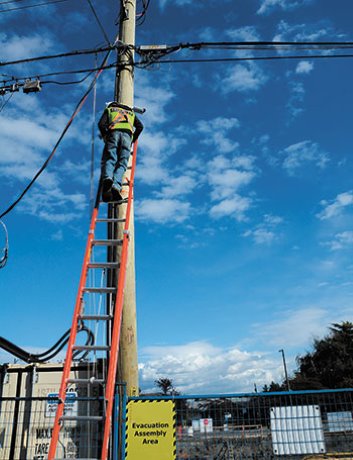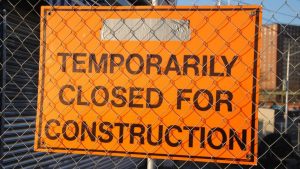Whether or not an insurance company requires it, many owners and contractors think it fiscally and legally prudent to have some sort of security on a construction site.
Security can take the form of fencing, signage, live guards on foot patrol or electronic devices, such as video cameras, motion detectors and two-way audio.
Whichever method, or combination of methods, is actually used depends on a variety of factors.
Ralph Libby, commercial insurance account director with Megson Fitzpatrick insurance brokerage in Victoria, said most insurance companies won’t require special security for small projects.
“But, for larger projects, most insurers will ask that you have something, such as a live guard, metal fence, video cameras at the entrance and around the perimeter, loud speakers and continuous lighting,” he said.
“What you have and how much of it is usually negotiable.”
Libby said contractors need to think outside the box when they consider site security.
“Think of all the possible risks you’ll face and how to protect against them,” he said.
“Even if you suffer a loss that’s covered by your insurance, you don’t want anything to happen on-site because it could eat into your profits.”
Anthony Minniti, VP of Western Canada operations of the Century Group Inc., said his general contracting and construction management company secures its sites with live guards and sometimes closed-circuit television (CCTV) systems and motion alarms.
“Many project owners have sensitive IT networks, point-of-sale systems and telephone systems, all of which have to be secure,” he said.
“They need to be protected during finishing, in a secure room with electric locks, alarm and card tracking system to monitor who goes in and out.”
Alan Fletcher, president of AFC Construction Limited in Comox Valley, said many project owners love CCTV.
“They can watch the progress of the work on their buildings,” he said.
“Workers hate it, though, because they think they’re being spied on.”
Fletcher said contractors need to look carefully at the details in their contracts for any clauses about site security.
“You could be stuck with a huge bill if something happens and you don’t have the right security in place,” he said.
Live guards and electronic security each has its supporters.
Bill Riggs, director of operations of Commissionaires Victoria, The Islands and Yukon, said a construction site needs guards at access points to protect against unauthorized entry and prevent theft.
“Security cameras can be placed along the perimeter of a site and then monitored by a guard using a smartphone or an iPad,” he said.
“A guard will cost you $15-$20 an hour, but you don’t need a guard on site all the time. You could deploy one just at night, or you could use mobile patrol.”
Riggs said the major threats to a construction site are fire, vandalism, theft, safety and public liability.
“When we’re evaluating a site, some of the questions we ask are: How far away is the closest emergency response? What’s the size of the project? What types of building materials are being used? What type of public liability risks are there? What is the traffic density and quality of the street lighting?
“From there, we evaluate the threats and then recommend the best combination of people and security cameras.”
Making the case for electronic security is Scott Knutsen, co-CEO and director of sales and engineering of Burnaby-based Cobra Integrated Systems.
“Manpower is expensive and can eat into your profits, especially if your project is lengthy,” he said.
“Electronic security is often a better option and it doesn’t fall asleep.”
Knutsen said owners and contractors should be able to capture a perpetrator, not just record the event.
“If you put cameras and motion detectors around the perimeter of a project, that gives you more eyes on the site all the time,” he said.
“The monthly rental fee is around $1,000, which is about one-quarter the cost of a live guard. And, if a call comes in, a guard response costs about $50.”
Although electronic security can be less expensive than feet on the ground, it’s also less effective, said Simon Collery, managing director of Footprints Security Patrol Inc. in Nanaimo
“Many construction sites had moved to electronic security from physical security the last few years, but now many are moving back,” he said.
“Physical presence is a visual deterrent. If you’re a potential intruder, you know there’s a good chance you’ll be seen and remembered by a live guard.”











Recent Comments
comments for this post are closed